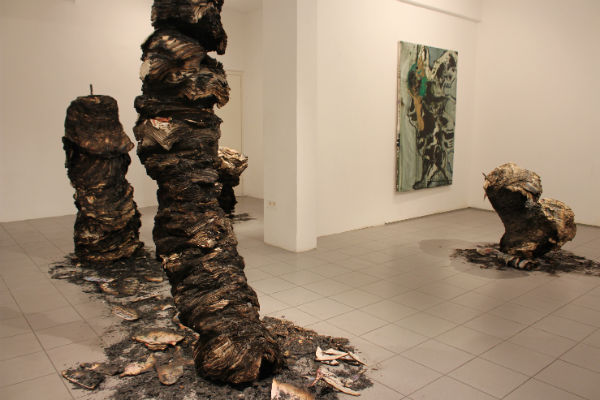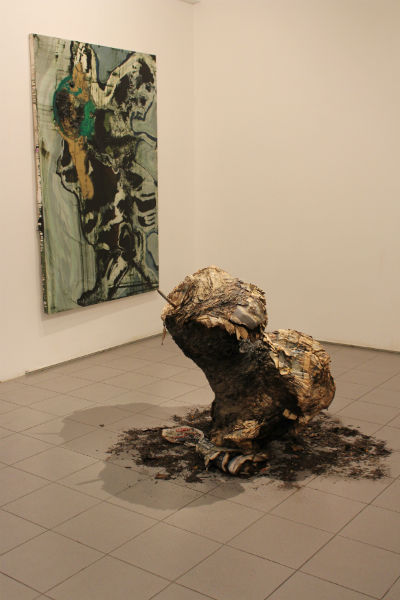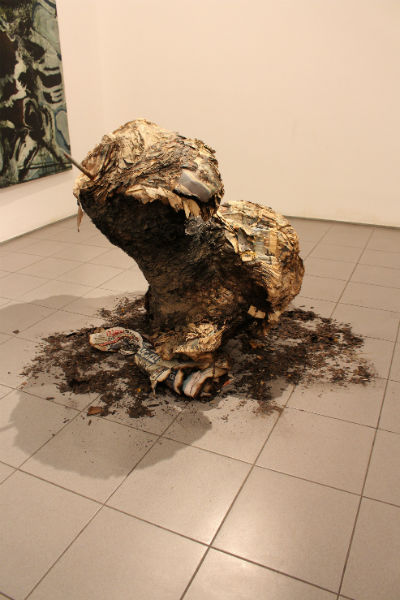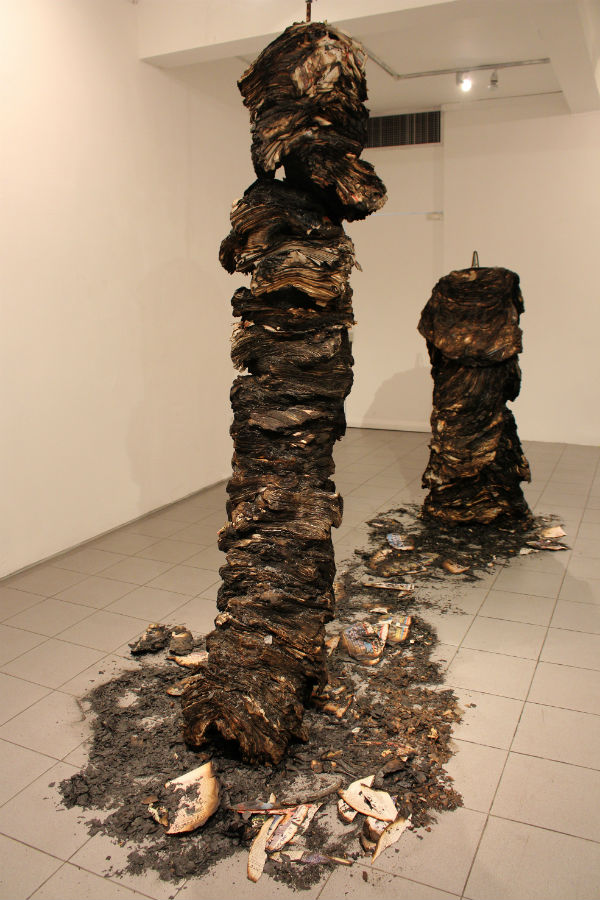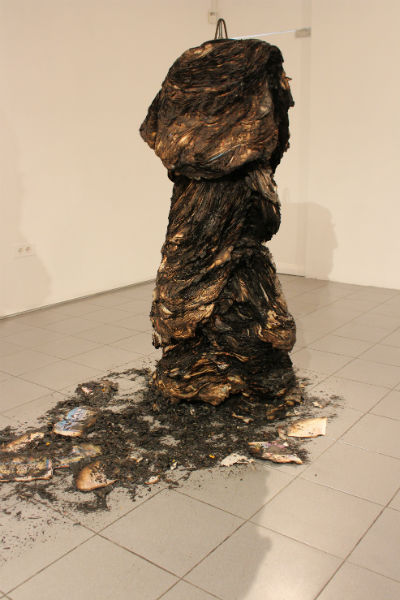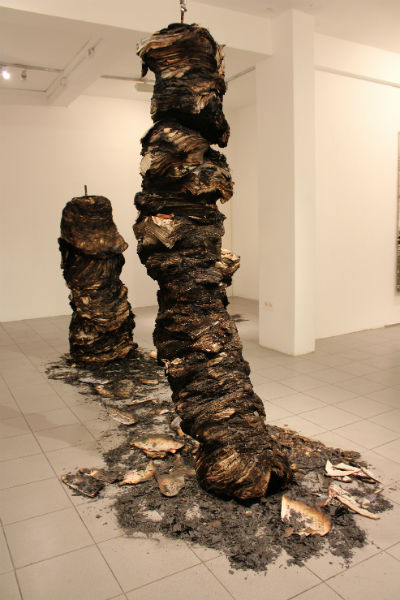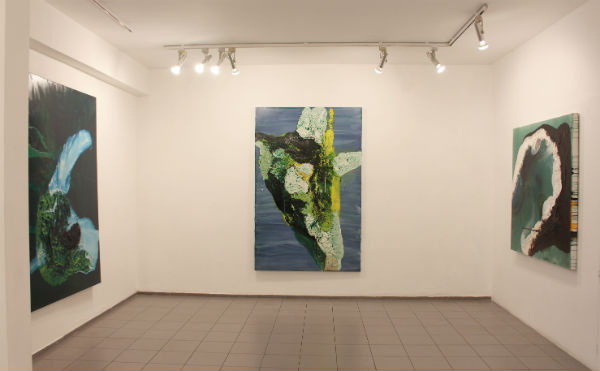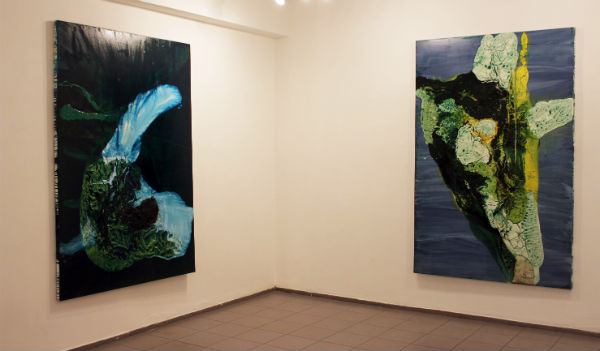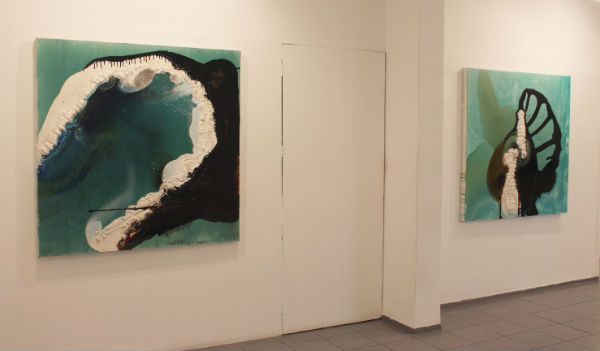Atar Geva
Uneasy State
Givon Gallery
25.5.2017 – 1.7.2017
On the face of it, the two main directions in the work of Atar Geva seem wholly disparate: His paintings, spontaneous-looking and abstract, are characterized by amorphous, non-figurative color fields and appear to lack a fixed reference point in reality and a governing method or logic; while his work in sculpture, marked by its simplicity and effectiveness, displays a strategy and method that draw on a well-articulated artistic ideal lodged in a concrete reality. In fact, when seen as a whole, Geva’s body of work is guided by the same line of thought. Whether in two- or three-dimensional, it is based on a subversive concept as regards representations of a social and political reality, with charged representations through which he examines the reality that surrounds him both on the private and collective level.
In “Uneasy State,” his current exhibition at the Givon Gallery, Geva presents a body of work made over the past two years, paintings in varying formats on canvas and paper in industrial paint, acrylic, gesso, tar, and sometimes even wine and coffee; and, alongside his paintings, the exhibition’s eponymous installation work. Of monumental proportions, “Unease” is a sculptural arrangement consisting of scorched newspapers – partly complete and partly carved and consumed – with the whole arranged in the general shape of giant shawarma spits. Laid out side by side on the gallery floor, these objects seem to bear witness to some sort of violent incident whose nature remains unclarified: a natural disaster, premeditated assault, human error, neglect, an act of protest, a silencing or censorship. Geva made use of newspapers from the whole range of political leanings – right, left and center – to create his scorched totems, the remains of meditative objects with their own stance and agenda.
Even so, the violent scene of “Uneasy State” embodies values of beauty and aesthetics. Hence the installation manifests the lyrical and poetic side inherent in destruction and ruin – an aesthetic that brings to mind artists such as the German Anselm Kiefer, whose reworking of materials, partly ready-mades – whether in painting or sculpture – points to some of the darkest chapters in his country’s history and humanity as a whole. The definition of “unease” – “lack of stability, unrest, as in: ‘Unease has settled at the northern border’” (the Online Sapir Dictionary) – completes plainly but poignantly the sights of destruction that dominate the installation, pointing to an interruption to the normal course of life, to a distress and anxiety just as to the longing for the restoring of a peace and stability that might have never existed.
Geva’s paintings share the same intensity evident in his sculptural installation, even when, owing to their abstraction, they don’t point to it directly. Geva continues in his paintings a work strategy he has been following for some years now, a practice based on an organic view of painting as an abstract domain of rich and excessive texture. His voluminous color fields – the result of spilling and spraying – recall a relief more than standard painting technique, inviting a viewing experience charged with heavy sensual load which both gratifies and exhausts the eye. The amorphous fields come together in territorial formations, a mental or geological mapping both alluring and unsettling.
As in action painting, Geva’s painterly gestures embody the presence and physicality of the body in motion. As if seeking to challenge itself repeatedly, his technique embraces uncertainty and allows matter itself to determine the character and properties of each painting. The color fields join in geological-like strata, accumulations that also recall organic cultures. Just as the paintings lack a solid reference point in reality, so are they devoid of an aura or nostalgia of any kind, focusing themselves time and again on the painterly reactions and counter-reactions that take place: The splattering of colors seeping into each other, unexpected interplay and mutually infiltrating fields. Hence the time dimension is also present here, as an enabling element that allows color fields to change and evolve, to alter in shape and texture, dry out and crack over time. In this sense these are time-based works, in that their making process might last from hours to several months.
Geva’s point of departure had always remained a fundamental stance challenging everything that is rooted, principled and ideological through a politicizing of the work of art. Already as a student at the Midrasha, and later in his continuing studies at Bezalel, Geva has adopted a provocative set of images drawn from local reality – the paving of a road in a built surrounding, concrete casting of the negative space of a pit torn open by bombing, or the ashen newspaper spits of his current show. Through this system of charged images, Geva was, and still is, an artist preoccupied with mediating our local realm of existence while making poignant remarks on day-to-day reality.
Sally Haftel Naveh

